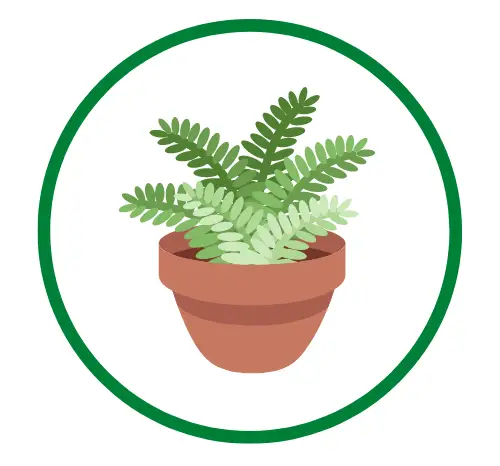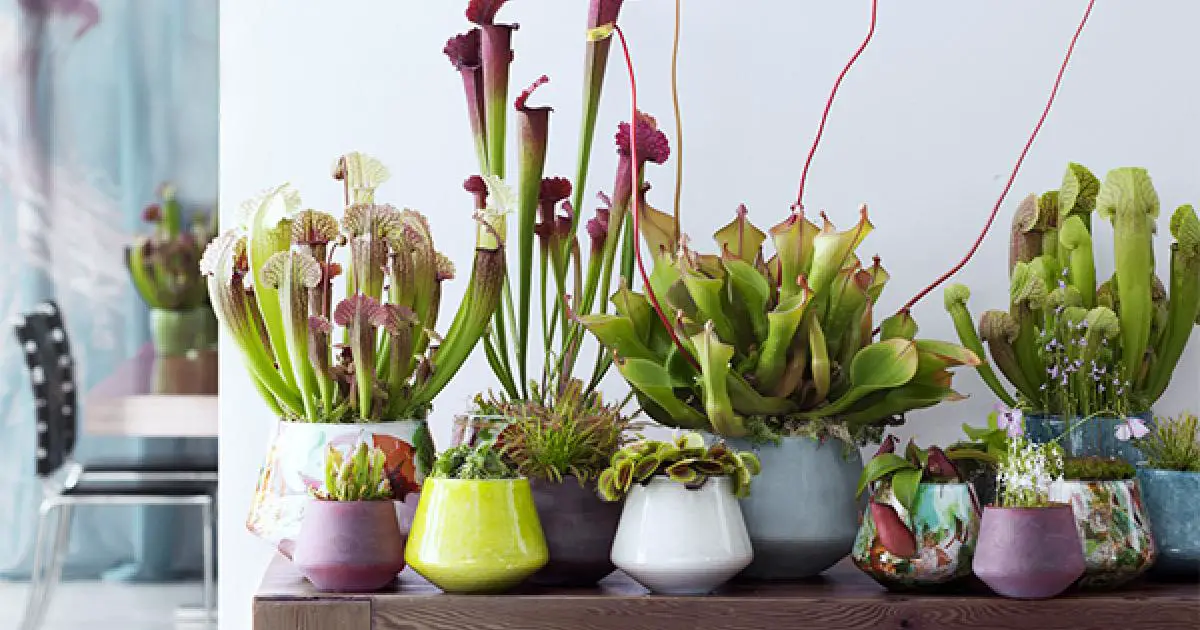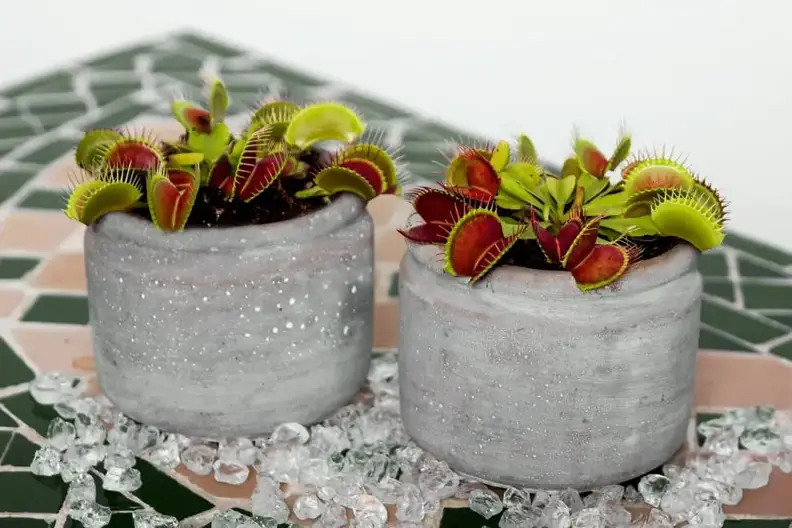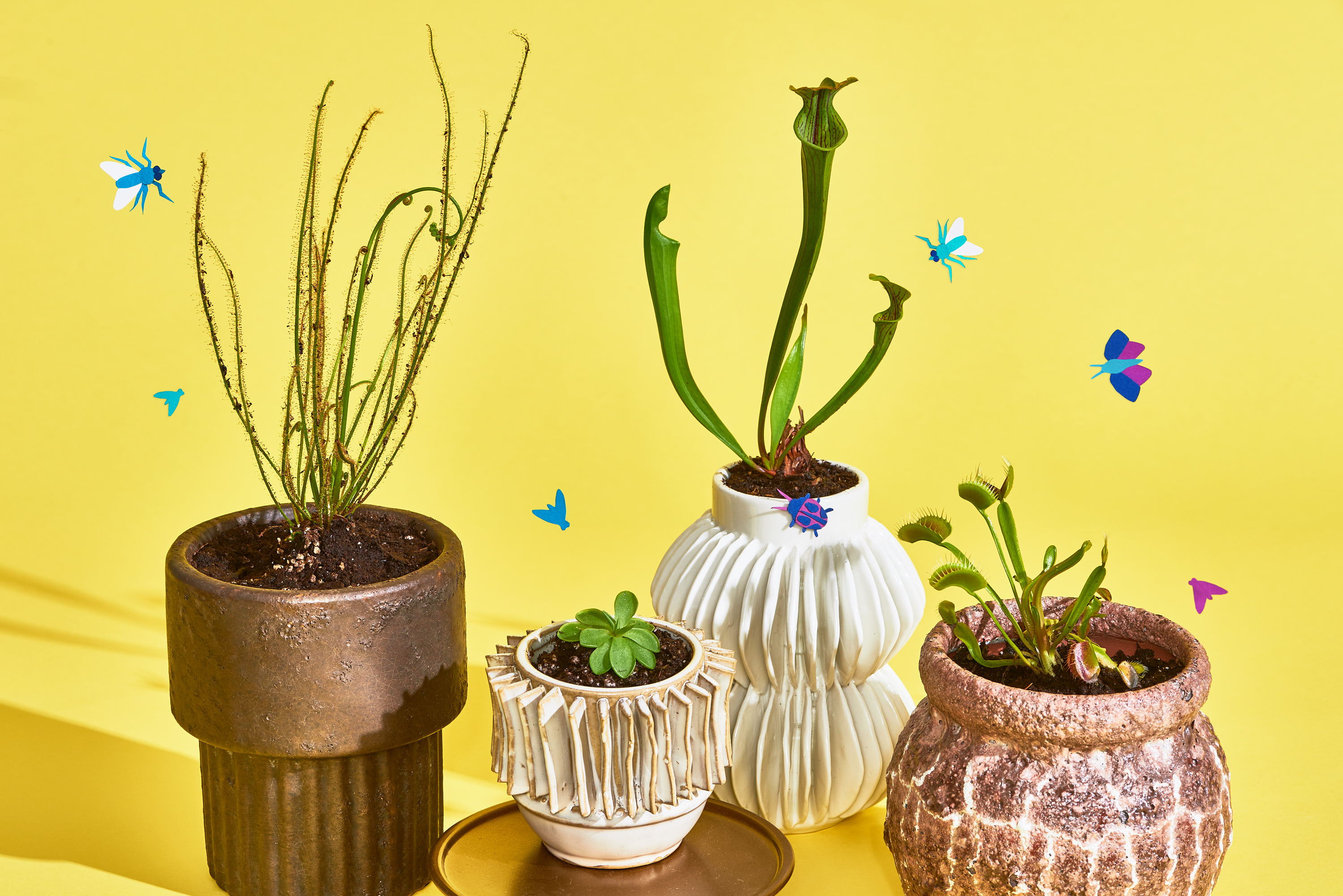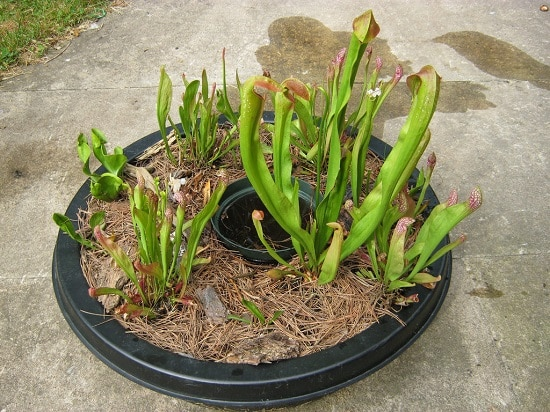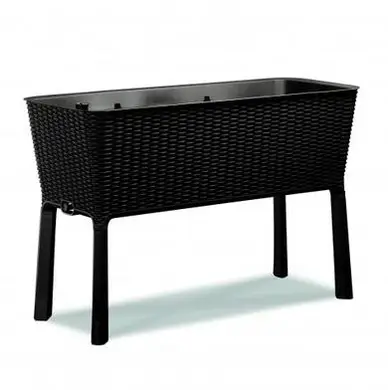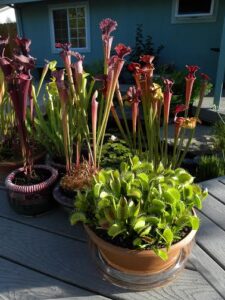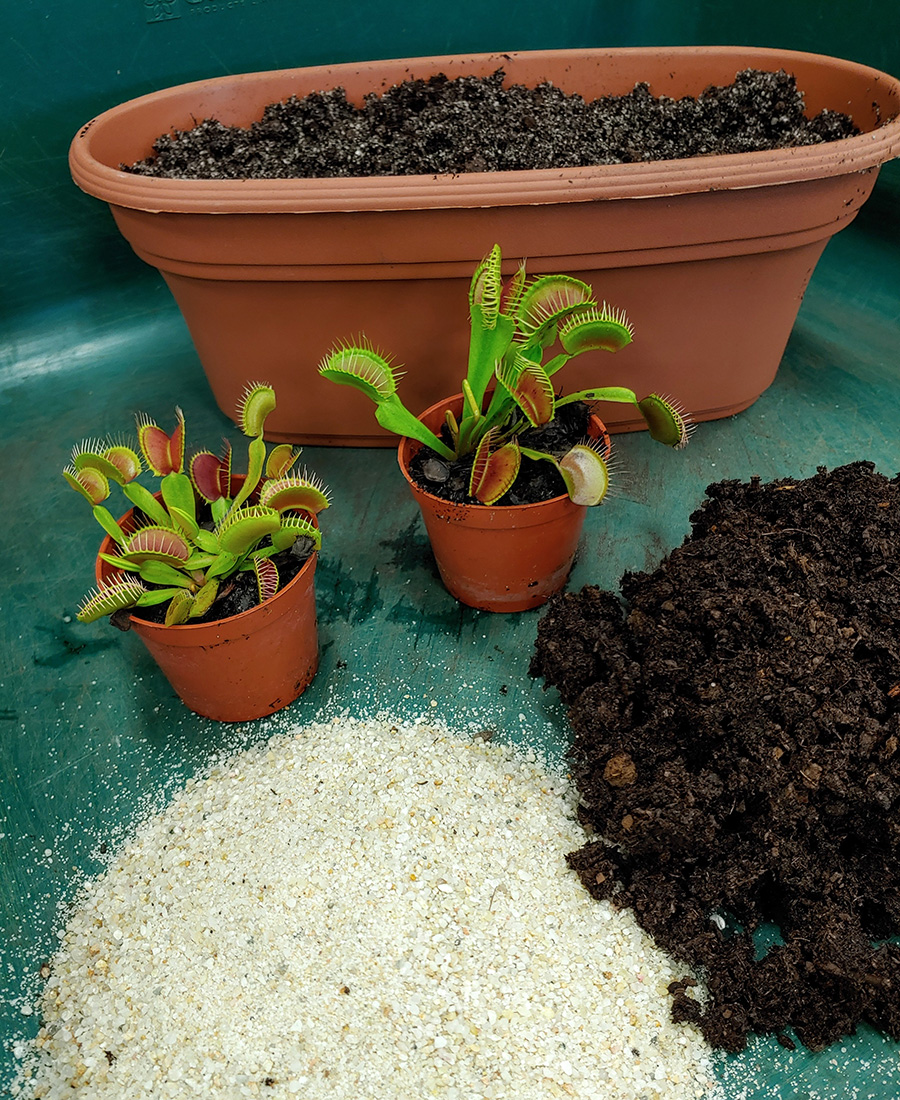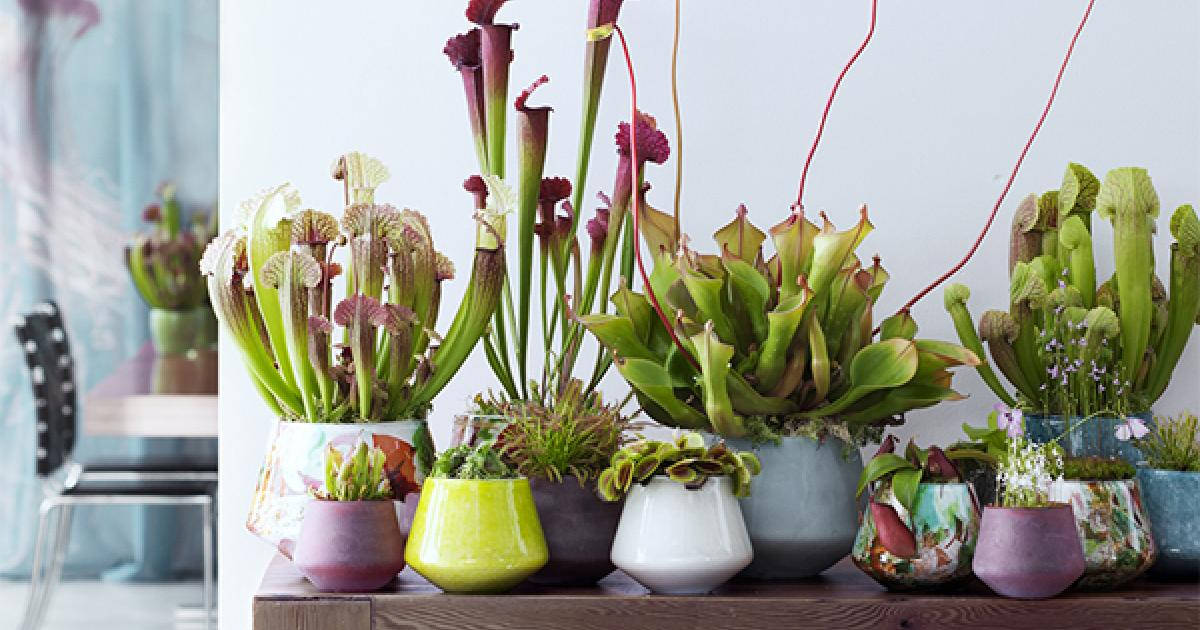The best pots and planters for carnivorous plants are frequently asked of me. Making sure you choose the best pot for your venus flytrap is obviously crucial because carnivorous plants require a lot of care.
This will undoubtedly be helpful to you whether you’re looking to plan your venus flytrap, nepenthes, or sundews. Finding the best pots for carnivorous plants is not as difficult as you might think, despite the fact that it may seem like a big decision!
The best planters and pots for your carnivorous plants will be discussed now. The potted venus flytraps look fantastic!
What really matters more to you than anything else? Do you want to keep things straightforward and use the least expensive options that will work the best? Or, like the majority of us, do you prefer your carnivorous plants to live in a space that is both functional and aesthetically pleasing?
If you’re into carnivorous plants, I’d guess you want to go with the “looks cool” approach. Don’t worry; today we’ll discuss all of your options. I’ll show you some that I think are stylish as well as some reasonably priced planters and pots for carnivorous plants that will function well.
I also wanted to mention that I spent a lot of time writing up some other excellent information on venus flytraps before I go any further. These will be fantastic if you’re interested in venus flytraps!
The list of them is below.
50 Venus Flytrap Name Ideas – Fun and Creative Plant Name Ideas
Guide for Repotting and Potting Venus Flytrap
7 Easy Carnivorous Plants – Best Review
Carnivorous plant terrarium 5 Steps Exploring the Exotic
How to grow Venus Flytrap and Other Carnivores
What Do Venus Flytraps Eat? 8 Best Foods – how to feed
How often to water venus fly trap? – how to water (rainwater, pure water, distilled water)
Best Pots And Planters For Carnivorous Plants
Starting with inexpensive but effective carnivorous plant pots and planters, let’s discuss their benefits. Let’s discuss what to look for in a planter or pot for carnivorous plants before we discuss the pots and planters themselves.
What to Watch Out For
This will invariably depend on the type of carnivorous plant you want. You might be searching for a venus flytrap pot or planter or a place to set up your nepenthes. I’m concentrating more on the warning signs that all carnivorous plants should have to stay healthy.
Nearly all carnivorous plants can be subjected to the rules I’m about to discuss. However, bear in mind that most carnivorous plants do need special care, so it will be up to you to confirm and comprehend this before choosing a planter or pot for your carnivorous plant.
The drainage system will be one of the most crucial components of a good planter for a carnivorous plant. You might find the ideal pot that you simply must own, but it doesn’t have any holes in the bottom.
This is fine; just use a regular power drill to drill your own holes.
It’s crucial that you take note of a pot or planter with lighter hues. Anything that is black, dark grey, or dark brown should be avoided. These planters or pots will soak up the sunny location
when it’s hot outside and will likely cook the roots of your carnivorous plant.
Unglazed terracotta planters should be avoided because they are very porous and can dry out the soil. Additionally, I’ve seen suggestions that these containers may over time leach salts into the soil, which is bad for carnivorous plants that require mineral-poor soil.
Check out my link below to find resin planters with a terracotta look if you really like the style!
In the end, you should probably steer clear of any planters or pots that are exceptionally breathable and porous. Additionally, make sure the plants are completely glazed. Some planters I’ve seen have been glazed on the outside but not the inside, which is bad for plants that eat other living things.
When selecting a pot for your carnivorous plant to stay healthy, make sure to follow these considerations:
- Suitable materials for pot – Glazed ceramic, plastic, resin, styrofoam.
- Unsuitable materials pot – concrete, unglazed ceramic, clay, terra cotta, metal
- Diameter pot – 3-6 inches for single plants, 6+ inches for multiple
- Depth – 4 – inches is the minimum recommended depth
- Drainage – Must contain drainage holes
- Color of pot –Avoid black pots in extremely hot locations
- Airflow- Avoid closed containers, such as terrariums and domes, at all costs
- Soil for pot – peat moss, horticultural sand, fertilizers, sand.
Cheaper Alternative: Plastic Planters
So, you not too concerned with the looks you just want a planter for carnivorous plants that is going to function well and also not cost much money. This would be a good option for someone who is growing carnivorous plants to sell.
It’s important for the plants to do well, but you don’t want to waste any overhead on the planters.
Consider yourself as the plant, and your shoes as the planter. Do we have to pay more than $50 to get a decent pair of shoes that work? Not really, no. But if we really want to impress, we might want to spend $200 on a brand-new pair of Jordans or whatever the in-style footwear is right now.
The same holds true for your planters or pots that are carnivorous. To make them look cool, you can spend as much as you like! Just remember that the inexpensive plastic container option is one of the most practical and cost-effective ways to keep your carnivorous plant happy and healthy!
These are pretty cool for smaller plants; you could use them to make venus flytraps look lovely. I did confirm that these do indeed already have drainage holes in the bottom, so they are ready to use!
How many of you just rolled your eyes at me? Ya, I know not the greatest comparison. And I’m sure most of you are saying, “Come on buddy, were better than cheap plastic containers, tell us about the cool ones!” FINE! Let’s take a look at some of the cool carnivorous plants pots and planters.
Resin Planters For Growing Carnivorous Plants
Plastic is a type of resin, but according to online searches, they have different definitions! Comparing resin pots to plastic pots will show you how much more attractive resin containers are. They frequently resemble aged metal or rustic stoneware, but they are absolutely safe to use with carnivorous plants.
Additionally, they are equally as lightweight as regular plastic. My absolute favorite type of planter is made of resin. Additionally, the styles and variety are endless!
Okay, so you mocked my suggestion for a plastic planter or pot and now you want to see some of life’s finer things. Okay, let’s look at resin pots or planters for most carnivorous plants. However, resin might have you fooled because it’s really just a more upscale form of plastic. The fact that it simply looks better is what matters. However, I have seen some really cool resin planters and pots.
I’m such a sucker for whiskey barrels, I think this little resin whiskey barrel planter is my favorite – perfect pot!
Click Here For Price and Size Options!
For your carnivorous plants, a cool planter!
Perhaps something larger where you could plant a little bog garden? I came across one that even has a drainage plug and has a basket-like appearance. This could work really well for growing venus flytraps and other carnivorous plants in your own personal bog garden.
Additionally, it has an awesome self-watering system that allows you to check the humidity in the planter. With plants that consume other living things, you can avoid root decay and excessive watering with its assistance. Another huge plus is the drainage system, which will be ready to use right out of the box with no drilling or customization required!
Just keep in mind to check for good drainage if you find one you like, or make sure you have something at home you can use to drill a few holes in the bottom to add your own drainage! For these resin pots and planters, even a nail and hammer would likely do the trick!
Glazed Ceramic Planters And Pots
So that is completely fair to say that you are not a plastic kind of person. Let’s look at some ceramic pots and planters. Remember that these planters for carnivorous plants should always be fully glazed, especially on the inside.
Planters made of glazed ceramic planters are easier to maintain and more attractive than plastic ones. However, they are heavier and more likely to break. A fully glazed pot should be used when using glazed ceramic.
The majority of carnivorous plants will be harmed by unglazed clay, stoneware, or other earthen materials over time as they absorb and accumulate minerals. In general, avoid using a pot that is porous and breathable. Carnivorous plants can use anything that is non-porous, such as glass or plastic.
Glazed Ceramic Planters You can Buy here
There are so many cool glazed ceramic pots and planters to choose for your carnivorous plants. I’m just going to list a couple here that I really like personally, click the link above though as there are so many to choose from. Out styles may not be similar but I almost guarantee you will find something you like above!
This would look fantastic with a small pitcher or a medium-sized venus flytrap, in my opinion!
Click Here To Check It Out!
If you’re looking for something a little bigger, check out this awesome set of two hand-painted planters, measuring 10″ and 8″. They have plugs and drainage holes and are double-glazed.
These planters are ready to go with drainage holes and plugs!
Exception to the rules!
Since pinguicula are one of the few species of carnivores that can tolerate minerals well, they can be grown in an unglazed clay pot. Additionally, Mexican Pinguicula only require very shallow soil due to their shallow roots.
These bonsai planters for pings look really nice. They’ve been planted in an abalone shell, too, as I’ve seen! Butterworts frequently grow on vertical rock faces in the wild. Ingenious growers have even planted them in the cracks of huge volcanic rocks!
Hanging Planters
If you want to plant your Nepenthes or pitcher plants, hanging planters can be paired absolutely beautifully with carnivorous plants. They probably aren’t the ideal containers for growing sundews or venus flytraps. Just keep in mind that all of the aforementioned guidelines still apply when looking for a hanging planter.
It’s important to remember that since there isn’t a tray with hanging planters, it will be a little trickier to keep water on the plants. Additionally, you should confirm that drainage holes are still present.
Drainage shouldn’t be an issue if your carnivorous plants are being hung outside. Maintaining proper drainage is a little trickier if you are hanging your plants indoors.
The hanging pots’ tendency to be a little shallower is the other issue you might encounter. Make sure the hanging planter you choose is a little deeper so the roots of your carnivorous plants have room to expand.
The above planter has a cool self-watering feature that makes it much simpler to maintain your carnivorous plants’ water levels. They are not only available in white, but also a variety of other colors. I wholeheartedly recommend using something similar to aid in watering. Additionally, they have plugs and drainage holes.
Click Here To See Colors and Price!
Planter And Making A Bog Bow Video (pitcher plants)
Check out this super cool video below of the type of planter to look for and how to create a “Bog Bowl”. This is a really cool video that shows you how to plant a venus flytrap and pitcher plant in the planter that he has.
Bog Bowl! Sarracenias! Pitcher Plant Planter! Tropical Plant Partty
Carnivorous Plants Pots and Planters Conclusion
What you want is ultimately what matters most! You will have a wide range of options available to you if you follow the straightforward guidelines listed above for what to look for in a planter. You have a nearly infinite number of color, style, and option choices between plastic and resin planters.
I sincerely hope you found this guide to the top planters and pots for carnivorous plants useful. It’s a relatively straightforward and insignificant component of your carnivorous plant, but since it serves as its residence and home, it is significant to your plant.
If you found this useful, don’t forget to share it on your preferred social media site, whether it’s Facebook, Pinterest, or Instagram. It would be extremely meaningful to me!
One more detail! Don’t forget to buy peat moss, sphagnum moss, horticultural sand, fertilizers, potting soil, and of course insects.
Carnivorous plants require low mineral water or osmosis water because is crucial to the health of these plant. Try keeping a bucket container near the downspout location to collect rainwater. Distilled water can be purchased at the grocery store in a gallon-size jug. Avoid using bottled water and tap water, as there are simply too many minerals in them. Plant grow in nutrients poor soil and need pure water. The minerals (pests) from tap water can “over-fertilize” and “burn out” the plants.
Frequently Asked Questions
Do carnivorous plants need drainage?
Most carnivorous plants need a wet soil, but some will require the soil to be only damp and well-drained. You can also use clay containers that have drainage holes for some carnivorous plants.
Should you mist your carnivorous plants?
Most carnivorous plants need high humidity to survive (peat moss, and sphagnum moss
to retain moisture). Mist the plants with a spray bottle once or twice a day, though you can spray them more if the weather is dry or if the humidity level in your house is low.
How deep do Venus flytrap roots go?
Feeder roots extend off of each rhizome, diving as deep as 10 feet in a garden environment. These roots search for limited nutrients in the wet soil as the traps capture alternative sustenance.
Can you plant Venus flytraps in terracotta pots?
Plastics and Styrofoam? A ceramic pot glazed and sealed is another option, but plastic is the safer option.
Do Venus flytraps need big pots?
Then put your Venus Flytrap back into the proper place in the correct soil. Many growers are overreacting if they lose a fly trap. However, it is not normal. This trap contains the leaf of the flower and sometimes plants have lost leaves.
